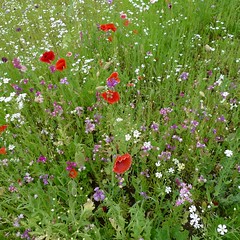| wildlife garden (Photo credit: helen.2006) |
But a growing number of homeowners are deciding to forgo mainstream lawn care practices and make their lawns more wildlife-friendly. This requires some work, too – it's not as easy as just ceasing to mow. A good wildlife garden has flowers and plants that attract and feed native species. But for those who enjoy watching nature up close, they are certainly worth the effort.
There are many advantages to turning your lawn into a wildlife garden. Here are a few to think about.
* Wildlife gardens are easy to care for. There is some work involved in getting them started, but once the plants are growing, you don't have to do much in the way of maintenance. You never have to mow, and watering requirements are minimal. Even when the weather is dry, the long grasses and weeds will retain more water than a manicured lawn.
* The native plants used in a wildlife garden are beautiful, and they tend to do very well since they are in their natural habitat. You don't have to worry much about them becoming diseased or needing extra attention, because they are already adapted to the weather and conditions in your area.
* A good wildlife garden attracts all types of species. Some plants attract insects, which in turn attract birds and other animals that feed on them. Other plants directly attract small animals, which in turn attract larger animals that are their natural predators.
| English: Wildlife Garden The Derwen Garden Centre display (Photo credit: Wikipedia) |
* Wildlife gardens are very environmentally friendly. Since you won't be mowing, you will create much less air pollution. And the absence of pesticides is not only good for the animals that visit and live in your garden, it's also good for soil and groundwater quality - and for your family.
A wildlife garden is much more interesting than a stretch of short, perfectly uniform grass. And it's also good for the animals that inhabit your surroundings. It provides them with food and shelter, and it provides you with a wealth of natural beauty right in your own yard.



No comments:
Post a Comment